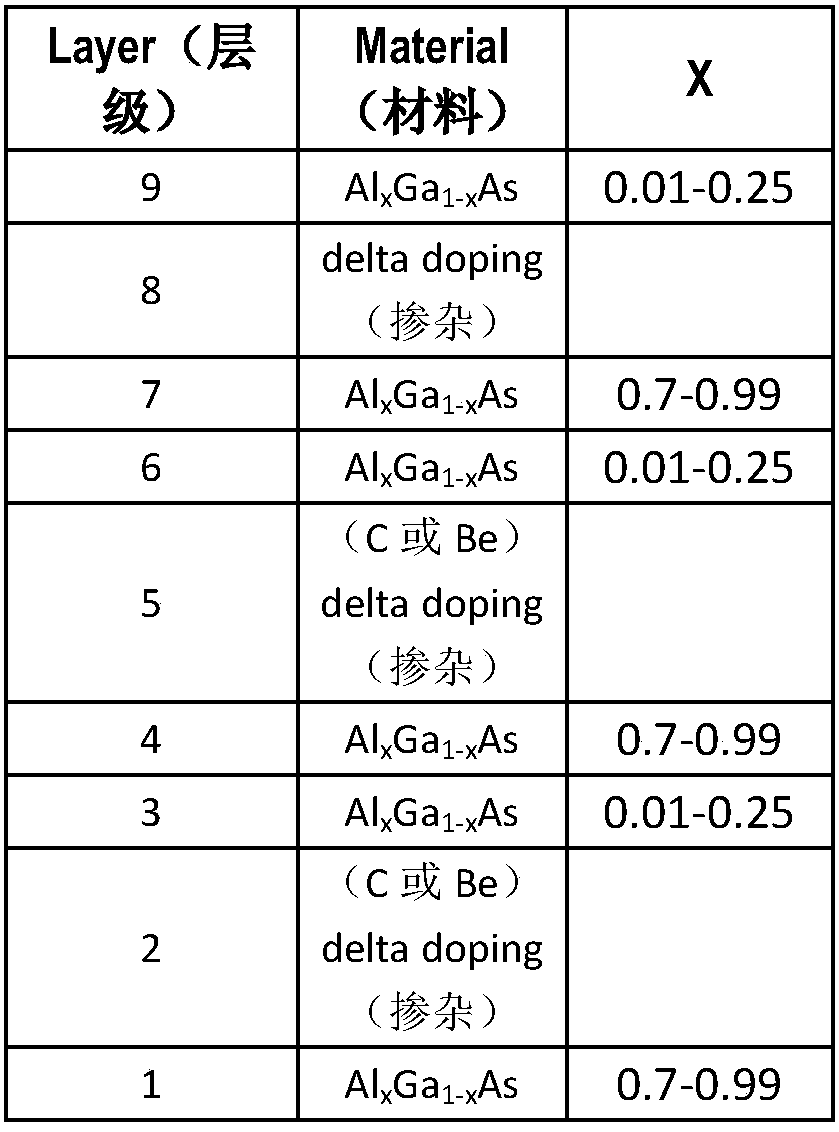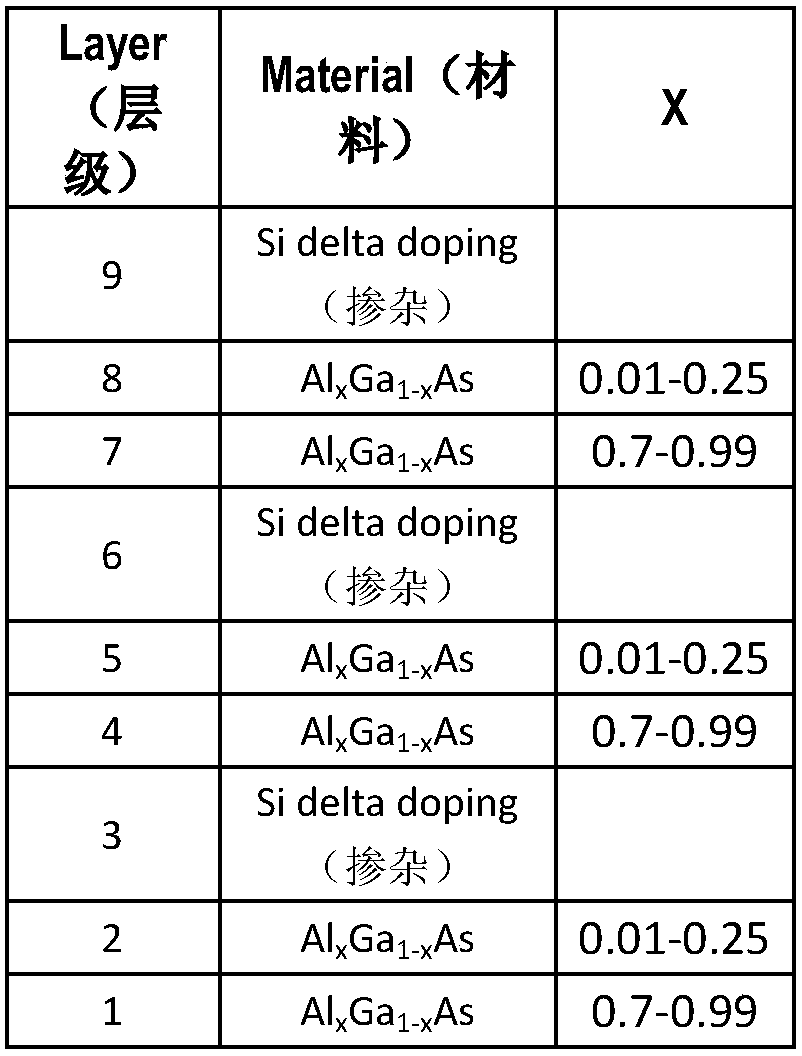DBR growth method applied to VCSEL as well as DBR and VCSEL
A technology of Bragg reflector and growth method, which is applied in the direction of lasers, laser components, semiconductor lasers, etc., can solve the problems of DBR reflection bandwidth narrowing, interface absorption enhancement, reflectivity decrease, etc., and achieve the reduction of series resistance and reduction of series connection Resistance, thickness reduction effect
- Summary
- Abstract
- Description
- Claims
- Application Information
AI Technical Summary
Problems solved by technology
Method used
Image
Examples
example 1
[0019] Example 1, the distributed Bragg reflector is a P-type distributed Bragg reflector, and the heterojunction interface of the optical standing wave node of the material crystal is Al 0.7-0.99 Ga 0.01-0.3 As / Al 0.01-0.25 Ga 0.75-0.99 As interface;
[0020]
[0021] As shown in Table 1, one of the growth cycles refers to alternately growing a pair of Al 0.7-0.99 Ga 0.01-0.3 As / Al 0.01-0.25 Ga 0.75-0.99 As crystals, respectively, in Al 0.7-0.99 Ga 0.01-0.3 As and Al 0.01-0.25 Ga 0.75-0.99 The interface between As is heavily doped with C or Be delta;
example 2
[0022] Example 2, the distributed Bragg reflector is an N-type distributed Bragg reflector, and the heterojunction interface of the optical standing wave node of the material crystal is Al 0.01-0.25 Ga 0.75-0.99 As / Al 0.7-0.99 Ga 0.01-0.3 As interface;
[0023]
[0024] As shown in Table 2, one of the growth cycles refers to alternately growing a pair of Al 0.01-0.25 Ga 0.75-0.99 As / Al 0.7-0.99 Ga 0.01-0.3 As crystals, respectively, in Al 0.01-0.25 Ga 0.75-0.99 As and Al 0.7-0.99 Ga 0.01-0.3 The interface between As is heavily delta-doped.
PUM
 Login to View More
Login to View More Abstract
Description
Claims
Application Information
 Login to View More
Login to View More - R&D
- Intellectual Property
- Life Sciences
- Materials
- Tech Scout
- Unparalleled Data Quality
- Higher Quality Content
- 60% Fewer Hallucinations
Browse by: Latest US Patents, China's latest patents, Technical Efficacy Thesaurus, Application Domain, Technology Topic, Popular Technical Reports.
© 2025 PatSnap. All rights reserved.Legal|Privacy policy|Modern Slavery Act Transparency Statement|Sitemap|About US| Contact US: help@patsnap.com


